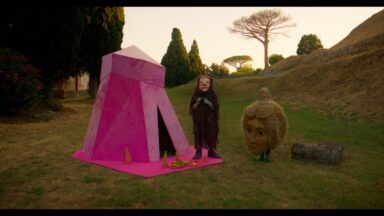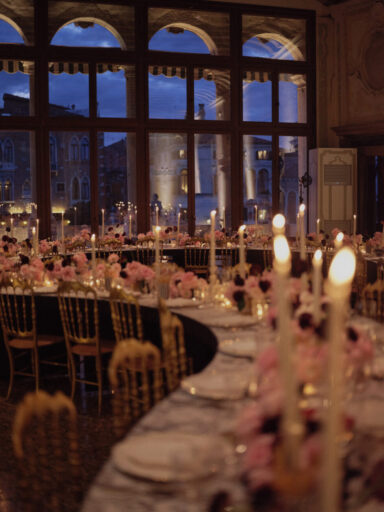Maria Lai on show at Palazzo Dosi Delfini, Rieti
From June 30, 2023 in the halls of Palazzo Dosi Delfini in Rieti opens The Bread of the Sky, an exhibition that brings together forty works by the great artist Maria Lai (Ulassai 1919 – Cardedu 2013) on the occasion of the celebrations for the Franciscan Centenaries, 1223 – 2023.
Conceived by Sergio Risaliti, director of the Museo Novecento in Florence, in collaboration with the Maria Lai Archive and organized by the Associazione Mus.e, the exhibition, curated by Sergio Risaliti and Eva Francioli, was commissioned by the National Committee for the Eighth Centenary of the First Representation of the Greccio Nativity Scene 2023, to pay homage to the “Poor Man of Assisi” through works inspired by creation and love for the other, ancestral yet highly topical motifs that illuminate the life of the saint and find a sensitive interpretation in the work of the Sardinian artist.
“Maria Lai’s exhibition, in the prestigious venue of Palazzo Dosi Delfini, the heart of Rieti, is the first major exhibition initiative of Greccio 2023, and brings us inside a reflection on the “contemporary sacred,” inspired by the Franciscan signs so present in the Sacred Valley but absolutely universal. The Bread of Heaven: the bread, if you will, is this Valley and its land; the sky, on the other hand, is our planet, it is the dialogue of peace with all the peoples who inhabit it and wonder about the future.” This was clarified by Paolo Dalla Sega, the cultural manager of the National Committee, Greccio 2023. A creator of simple yet deeply experimental research, Maria Lai draws on archaic rituals of her land, on the tales and dim poetry of the everyday, to give substance to a fantastic imaginary. In her works, laden with stories and symbols, the divine and the human merge, revealing themselves in a simple and universal language. Like the teachings of Francis, Maria Lai’s creations seem to question us about the mystery of existence, guiding us with childlike wonder among the inexhaustible wonders of the world. The path entrusts fragile creations in terracotta and stone, cloth and wood with a religious and social function expressed in simple words. Poems made of poor materials, works that, like the words of the Canticle of Creatures, embrace earth and sky, man and nature, mystery and revelation, and make us reflect on the power of universal love.

The exhibition draws inspiration from the artist’s ability to reinterpret in a contemporary key the example of Francis, creator of the timeless narrative of the Nativity scene created to celebrate the birth of Jesus, the first time, on Christmas in 1223 in a cave in Greccio. “I love the crib,” said Maria Lai, “as an experience of something that, the more I investigate its inexpressible, the more I find truth, the more childlike and naive I become, and the more I am reborn. (…) I love the crib -because it gathers us around the hope of a new world.”
Through her nativity scenes, Maria Lai renews each time that experience of approaching the sacred, the manifestation of God among us: tiny representations capable of reproducing in a single surface history, dreams and utopias that endure among peoples. Often fragmented and incomplete, they call into question the precariousness of the contemporary condition, and at the same time connect the finiteness of the earth and the infinity of heaven. Also on display is The Offering, an earthenware bread, that “body of Christ” offered to us all as spiritual nourishment. The interest in bread-making, a metaphor for art and life, runs through the artist’s entire production, fascinated since childhood by the rituality and mystery of the “making of dough for oneself.” Part of numerous exhibition projects, Maria Lai’s breads have over the years found a home in the Rieti territory, as in the public art intervention Olio al pane e alla terra il sogno (1999) made for the Museo dell’Olio della Sabina in the ancient oven of Castelnuovo di Farfa. Bread evokes the human story of Christ and the mystery of the transubstantiation of the Last Supper, central themes in the human and religious history of St. Francis, without forgetting also that relationship with humble things, anthropological values and their connection to spirituality, which characterize Lai’s work.

Fundamental to Maria Lai’s mature production is the use of thread, embroidery and the art of sewing, which emerges in the Geographies, embroidered cloths on which complex “astral maps” are unfolded, which, the artist recalls, “responded to the need for a relationship with the infinite, for a dilation and projection onto distances.”
Lai’s maps invite us on a journey beyond contingency, drawing imaginary spaces, evoking worlds, constellations and astral harmonies. Curved and oblique lines lead our gaze to the elsewhere, an emptiness that is charged with mystery and magic: “I seek cosmic spaces, skies, spaces that are far away yet tactile. The spaces I seek are not so much in a surface as beyond it.” The artist also entrusts her autobiography, her thoughts, her aphorisms to embroidery, translating them into delicate writings on fabric, where the written language combines with the image, cancelling the distances between poetry and visual arts. Reflecting on an ancient practice linked to the female figure, sewing appears to be a place of freedom, capable of translating universal and personal instances.
Love for creation envelops all the work of the artist for whom the work is “an object of scientific investigation, but a possibility of contact with the universal (…) The contact must be direct and individual, however: not as a mental act, but through the body, through matter.” Maria Lai observes life in all its forms, giving voice to its variety: her works are an expression of a pure and unfiltered love for nature and living beings. “I am a little girl playing, a little goat anxious about precipices. I listen to the silence suspended between heaven and earth.” The little goat, humble and stubborn, is a kind of alter ego of the artist, who with determination pursues her research revealing the generative power of art, which defies convention and celebrates in simple language the wonder of creation.

“The exhibition The Bread of Heaven reaffirms the centrality of the Museo Novecento in the Italian art scene,” says Sergio Risaliti, director of the Museo Novecento in Florence, “re-launching its role as a cultural institution committed to the realization of projects aimed at enhancing both the collections of the City of Florence and the artists in them, through exhibitions that cross the boundaries of the metropolitan city to open up to the national territory. The present exhibition is in fact part of the projects conceived in recent years, which have seen the presentation of a conspicuous number of works from the Alberto Della Ragione collection. On this occasion we have focused our attention on the work of Maria Lai, a protagonist of Italian art of the 20th and 21st centuries, one of whose works has recently become part of the twentieth-century collections of the City of Florence. Her research, now known to an ever-growing public also thanks to the tireless work of the Maria Lai Archive, seemed to us the most suitable to reinterpret in a contemporary key the timeless spirituality of St. Francis of Assisi, celebrated today thanks to the articulate and intense work of the Greccio 2023 National Committee.”


